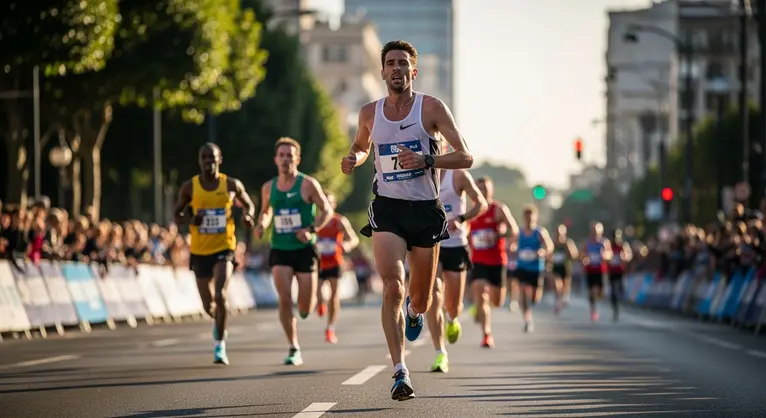Recovery & Injury: The Smart Athlete’s Guide to Bouncing Back Stronger
Staying active is rewarding, but it brings risks too. Whether you’re a weekend warrior or a seasoned athlete, injuries can happen. The key isn’t just to get back on your feet, but to come back wiser, stronger, and less likely to get hurt again. If you want practical, science-backed ways to prevent injuries and speed up recovery, you’re in the right place.
Understanding Sports Injuries and How to Prevent Them
Injuries don’t discriminate. From sprained ankles during a quick pick-up game to stress fractures after marathon training, the most common are largely preventable:
- Sprains and strains: Overstretching ligaments or muscles.
- Overuse injuries: Think shin splints or tendinitis from repetitive moves.
- Stress fractures and joint damage: Often due to impact or too-rapid training increases.
Proactive Prevention in Action
While some accidents are unavoidable, most injuries follow patterns. Here’s how to stack the odds in your favor:
- Start with a proper warm-up and dynamic stretching. Picture your muscles as cold pizza dough—trying to stretch it leads to tears. A warm muscle, like dough at room temperature, is flexible and resilient.
- Use protective, sport-specific equipment. Helmets, pads, and mouth guards aren’t just for pros. Make sure they fit—loose gear is almost as bad as none.
- Wear the right shoes. Choose footwear designed for your sport to support your feet and reduce joint stress.
- Strengthen your weak links. Focus on stabilizing muscles around knees, ankles, and shoulders. Simple core exercises or wobble board routines can reduce your injury risk.
- Perfect your technique. An experienced eye—a coach or a certified trainer—can fix subtle flaws in your movement that make injuries more likely.
- Progress slowly. Don’t increase your training load by more than 10% a week. Your body needs time to adapt!
Recovery Essentials: From RICE to Rehabilitation
If an injury strikes, don’t rush right back into action. Smart, structured care gets you back faster and safer:
- RICE protocol: For minor, acute injuries, Rest, Ice, Compression, and Elevation still work wonders to control swelling and pain.
- Know when to see a professional: Persistent swelling, loss of movement, or severe pain are red flags—don’t DIY your rehab if symptoms don’t improve quickly. For structured guidance, check out our injury recovery checklist.
- Rehabilitation frameworks: Progress gradually, guided by tissue healing and tolerance. Too much, too soon risks re-injury; too little, and you can lose fitness or range of motion.
Nutrition: Your Secret Weapon for Healing
Your body can’t rebuild what it doesn’t have. Nutrition is often overlooked, but it’s crucial for quick, quality repair:
- Protein is the building block for tissue repair. Aim for regular servings, especially post-exercise or injury.
- Micronutrients matter. Vitamin C helps form new tissue, zinc aids immune function, and calcium is essential for bone healing. Read more about the role of vitamin C immunity athletes and calcium for bone strength in recovery.
- Include anti-inflammatory foods. Salmon, walnuts, and flaxseeds can work alongside medical treatments to control inflammation and speed recovery.
Tools & Tech: Modern Recovery, Made Simple
Today’s athletes have more options than ever to speed up muscle repair:
- Foam rollers and massage guns break up knots and increase blood flow—a bit like a mini-massage every night.
- Compression garments may reduce post-training soreness and help muscle stability.
- Wearable tech: Devices that track your form and workload can highlight overuse patterns before they become a problem.
Mind Over Injury: Keeping Motivation High
Physical recovery is just one part of the process. Your mental game matters, too:
- Set clear, achievable goals. Big leaps start with small steps—set milestones on your rehab journey.
- Use visualization and mindfulness. Take a few minutes daily to picture yourself moving well and pain-free, or try short guided meditations to manage anxiety and pain. Learn more about visualization for healing.
- Lean on your support network. Coaches, friends, and physical therapists can be motivators and accountability partners. Celebrate every victory, no matter how small.
Conclusion: Stay Active—Smarter and Safer
Injury prevention and recovery aren’t just for elite athletes—they’re vital for anyone with fitness goals. By warming up wisely, using the right gear, pacing yourself, and fueling your body, you can keep injuries rare and recover faster when they happen.
Remember: the strongest athletes aren’t just those who push the hardest, but those who recover the smartest. Here’s to your next—injury-free—personal best!

